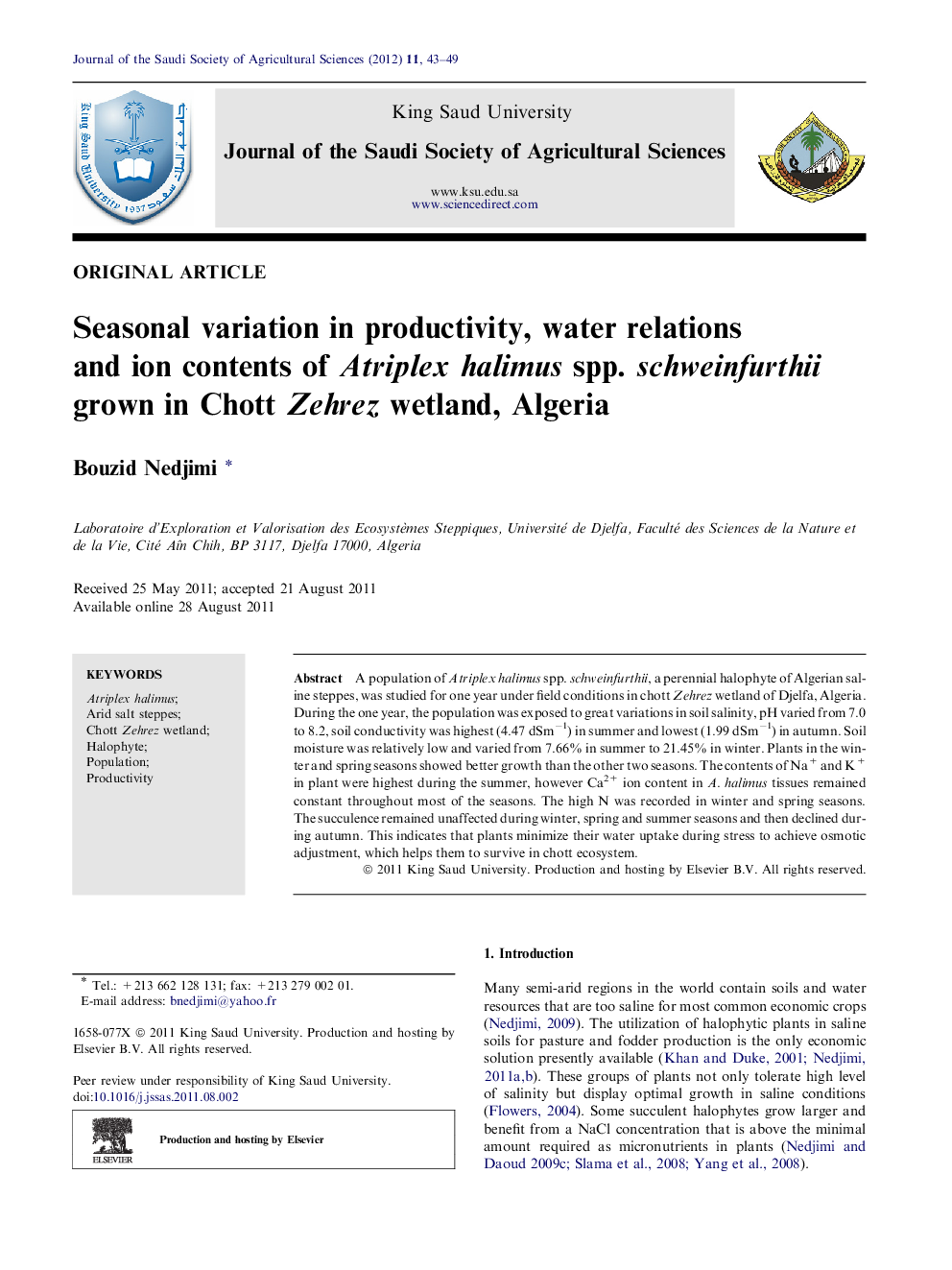| Article ID | Journal | Published Year | Pages | File Type |
|---|---|---|---|---|
| 4495707 | Journal of the Saudi Society of Agricultural Sciences | 2012 | 7 Pages |
A population of Atriplex halimus spp. schweinfurthii, a perennial halophyte of Algerian saline steppes, was studied for one year under field conditions in chott Zehrez wetland of Djelfa, Algeria. During the one year, the population was exposed to great variations in soil salinity, pH varied from 7.0 to 8.2, soil conductivity was highest (4.47 dSm−1) in summer and lowest (1.99 dSm−1) in autumn. Soil moisture was relatively low and varied from 7.66% in summer to 21.45% in winter. Plants in the winter and spring seasons showed better growth than the other two seasons. The contents of Na+ and K+ in plant were highest during the summer, however Ca2+ ion content in A. halimus tissues remained constant throughout most of the seasons. The high N was recorded in winter and spring seasons. The succulence remained unaffected during winter, spring and summer seasons and then declined during autumn. This indicates that plants minimize their water uptake during stress to achieve osmotic adjustment, which helps them to survive in chott ecosystem.
► Chott Zehrez as a large, shallow lake ecosystem in Algerian steppes where wetlands are important part of their productivity. ► The conservation and management of these wetlands require more detailed knowledge of their ecology and environment. ►A. halimus population employs osmotic adjustment during the dry period which helps them to survive in chott ecosystem.
